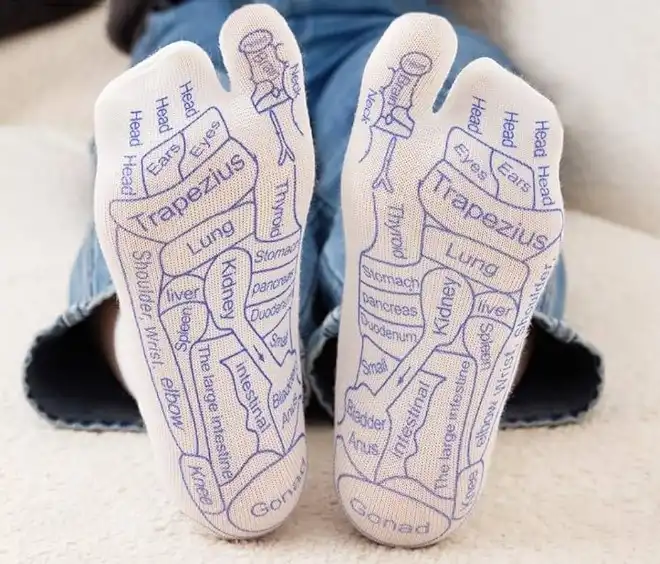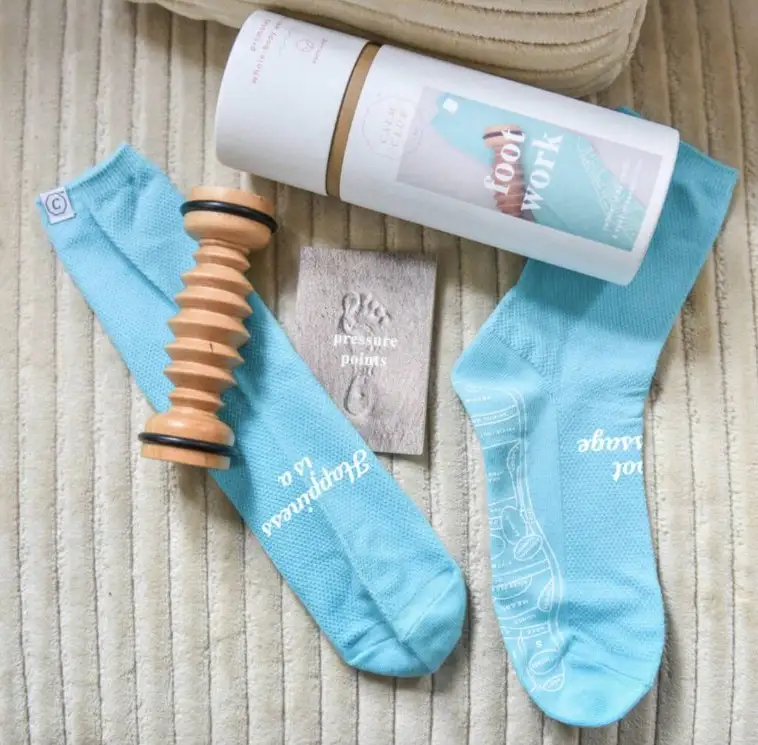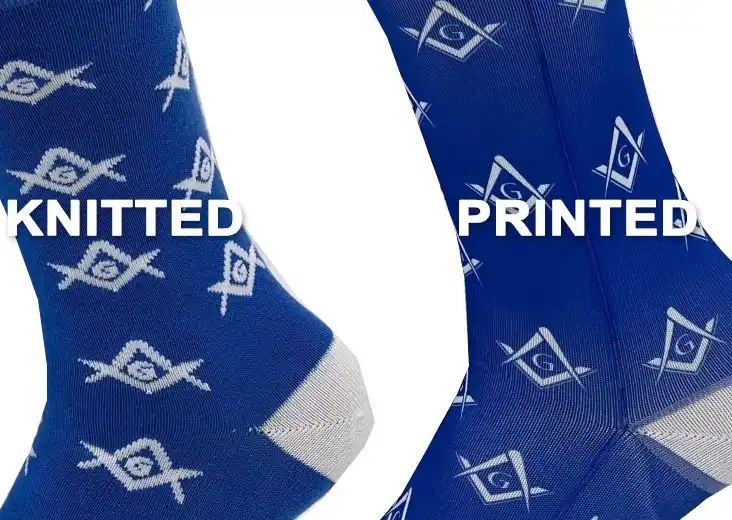The growing interest in non-invasive wellness approaches has brought reflexology-based products into mainstream attention, with specialized socks emerging as particularly accessible tools for this ancient therapeutic practice. Reflexology socks feature strategically placed nodules, patterns, or pressure points designed to stimulate specific reflex areas on the feet that practitioners believe correspond to various organs and body systems. While traditional reflexology requires trained practitioners, these specialized socks offer a simplified, self-administered approach to some of the practice’s fundamental principles.

This comprehensive guide explores how reflexology socks work, their potential benefits, proper usage techniques, and important considerations for incorporating them into holistic wellness routines.
Understanding the Principles Behind Reflexology Therapy
Reflexology operates on the principle that specific points on the feet, hands, and ears correspond to different organs and systems throughout the body. This therapeutic approach suggests that applying pressure to these precisely mapped points can promote healing and balance in corresponding areas. Traditional Chinese medicine has utilized these connections for thousands of years, viewing the feet particularly as microrepresentations of the entire body with complex energy pathways connecting reflex points to distant organs and tissues.
Modern reflexology practice typically involves trained practitioners applying precise finger and thumb techniques to these mapped areas. The pressure applied during sessions aims to break down crystal deposits that reflexologists believe form in nerve endings when energy pathways become blocked. This process purportedly restores proper energy flow, allowing the body’s natural healing mechanisms to function optimally across connected systems.
Max Hosiery’s research into reflexology principles revealed that while the full complexity of traditional practice requires professional training, certain fundamental stimulation patterns can be adapted into wearable formats that provide some of the practice’s benefits. Our product development focused on these adaptable elements, creating socks that incorporate strategically placed pressure points while acknowledging the limitations of self-administered approaches compared to professional treatments.
| Reflex Point Location | Corresponding Body System | Intended Effect |
|---|---|---|
| Ball of Foot | Heart and Chest | Improves circulation, reduces tension |
| Arch | Liver and Pancreas | Supports metabolic and detox processes |
| Heel | Lower Back and Sciatic | Alleviates back pain, eases nerve stress |
| Toes | Head and Neck | Relieves headaches, reduces sinus issues |
| Outer Edge | Spine | Promotes spinal alignment and relief |
How Reflexology Socks Translate Ancient Practice into Wearable Form
Reflexology socks represent an innovative adaptation of traditional practice into everyday wearable items. These specialized garments feature strategically placed nodules, textured areas, or gel inserts that apply gentle pressure to specific reflex points as the wearer moves naturally throughout the day. This design approach transforms passive footwear into active wellness tools that provide consistent, low-intensity stimulation rather than the concentrated, session-based approach of traditional reflexology.
The translation from manual therapy to wearable format necessarily involves certain adaptations. While professional reflexology applies varied pressure techniques with specific timing and intensity, reflexology socks provide more consistent, moderate pressure distributed across wearing periods. This difference creates complementary rather than identical benefits, with socks offering convenience and integration into daily routines that traditional sessions cannot match.
The Science Behind Foot Reflexology and Pressure Point Stimulation
Scientific examination of reflexology presents a complex picture, with research offering several potential mechanisms for observed benefits. Neurological perspectives suggest that foot stimulation activates specific neural pathways that may influence distant body regions through central nervous system connections. The dense concentration of nerve endings in feet makes them particularly responsive to tactile input, potentially creating systemic effects through neural signaling.
Circulatory explanations focus on how pressure application may improve blood flow both locally and throughout connected pathways. This improved circulation could deliver enhanced oxygen and nutrient supply to tissues while accelerating removal of metabolic waste products. For individuals with sedentary lifestyles or circulation-limiting conditions, this passive stimulation might provide particularly meaningful benefits.
Max Hosiery follows emerging research in this field, incorporating findings into our product development process. While acknowledging that some traditional reflexology claims await further scientific validation, our designs focus on well-established principles regarding circulation enhancement, nerve stimulation, and the documented benefits of regular foot massage. This evidence-informed approach creates products that provide tangible benefits regardless of one’s perspective on the more esoteric aspects of reflexology theory.
Key Features That Distinguish Quality Reflexology Socks
Several critical design elements separate effective reflexology socks from basic textured footwear. Precise nodule placement based on established reflexology maps represents perhaps the most important feature, with quality products aligning stimulation elements with specific reflex zones rather than random distribution. This intentional placement targets particular body systems based on traditional correspondence charts, creating more focused effects than general massage.
Material composition significantly impacts both therapeutic effectiveness and wearing comfort. Nodules must provide sufficient firmness to create meaningful pressure while maintaining enough flexibility to prevent discomfort during movement. Similarly, the sock fabric itself needs appropriate elasticity to keep stimulation elements properly positioned without restricting circulation or creating excessive pressure.
Targeted Benefits for Different Health Concerns
Reflexology socks offer potential benefits for various health concerns, with different designs targeting specific conditions through nodule placement and pressure intensity. Circulation-focused designs emphasize stimulation points corresponding to cardiovascular pathways, potentially benefiting individuals with peripheral circulation challenges or those with sedentary lifestyles. These variations typically feature higher nodule density across the arch and heel regions associated with circulatory system reflexes.
Stress-reduction models concentrate stimulation on points linked to adrenal, pituitary, and brain reflexes, primarily located in the toe and mid-foot regions. These designs aim to activate relaxation responses through neural pathways connected to these stress-regulating systems. For individuals dealing with chronic stress or anxiety, these targeted stimulation patterns may complement other relaxation practices.
Proper Usage Techniques for Maximum Benefit
Achieving optimal results from reflexology socks requires appropriate wearing protocols rather than simply treating them as ordinary footwear. Gradual introduction proves essential, with initial wearing periods of 15-30 minutes allowing feet to adjust to the novel stimulation. This acclimation period prevents the discomfort that sometimes occurs when sensitive feet encounter intense pressure points without proper adaptation.
Progressive extension of wearing time allows users to develop tolerance while monitoring individual responses. Most users can comfortably increase to 1-2 hours daily within the first week, potentially extending to 3-4 hours for regular users after proper adaptation. This gradual approach prevents the overstimulation that can occur with excessive initial use while allowing tissues to respond positively to consistent pressure application.
Combining Reflexology Socks with Complementary Wellness Practices
Reflexology socks provide greatest benefit when incorporated into comprehensive wellness routines rather than used in isolation. Hydration practices particularly complement reflexology stimulation, as proper fluid intake supports the metabolic processes and waste removal that pressure therapy aims to enhance. Many practitioners recommend increasing water consumption on days when using reflexology socks to support these complementary mechanisms.

Movement integration represents another valuable combination, with gentle walking while wearing reflexology socks creating dynamic pressure variations that enhance stimulation compared to static sitting. This movement-based approach activates different reflex points through weight shifting while improving overall circulation beyond what pressure stimulation alone might accomplish.
When to Use Caution: Contraindications and Considerations
While generally considered safe for most users, reflexology socks warrant certain precautions for specific populations. Individuals with diabetes should consult healthcare providers before use, as altered sensation might prevent appropriate feedback about excessive pressure. Similarly, those with peripheral vascular disease require professional guidance to ensure stimulation remains appropriate for compromised circulation.
Pregnancy represents another condition requiring careful consideration, with certain reflexology points traditionally avoided during gestation due to potential stimulation of uterine reflexes. Quality reflexology socks designed specifically for pregnancy modify pressure point placement to avoid these areas while still providing general comfort benefits.
The Evolution of Reflexology Sock Design and Technology
Reflexology sock design has evolved significantly from early basic models to contemporary versions incorporating advanced materials and anatomical mapping. First-generation products featured simple uniform nodules without specific placement mapping, providing general massage effects rather than targeted reflexology benefits. These rudimentary designs offered limited therapeutic value while often creating discomfort that restricted wearing time.
Modern designs utilize anatomical mapping technology to precisely position stimulation elements according to established reflexology charts. This evolution parallels advancements in material science, with contemporary options incorporating variable-density nodules that provide different pressure intensities for specific reflex points. These technical improvements create more sophisticated therapeutic effects while enhancing wearing comfort.
Comparing Different Types of Reflexology Footwear
The reflexology footwear category includes several distinct product types beyond traditional socks, each offering different advantages for specific usage scenarios. Reflexology slippers provide more substantial stimulation through thicker nodules, making them suitable for dedicated therapy sessions rather than all-day wear. Their open design allows easy removal when stimulation becomes temporarily uncomfortable, making them appropriate for users still developing pressure tolerance.
Reflexology insoles offer another alternative, providing stimulation that remains hidden within conventional footwear. These products work well in professional environments where visible therapy socks might seem inappropriate, though their effectiveness depends heavily on proper sizing and shoe compatibility. The compression from surrounding shoes enhances their pressure application but can sometimes create excessive intensity for sensitive users.
Max Hosiery offers products across these categories, recognizing that different formats serve various user needs and preferences. Our product guidance helps customers select appropriate options based on their specific goals, sensitivity levels, and usage contexts. This comprehensive approach acknowledges that effective reflexology stimulation can take multiple forms depending on individual circumstances and preferences.
| Footwear Type | Stimulation Level | Wear Context | Ease of Use |
|---|---|---|---|
| Reflexology Socks | Gentle to Moderate | All-day wear | Easy; like regular socks |
| Reflexology Slippers | High | Therapy sessions | Slip on/off for comfort breaks |
| Reflexology Insoles | Moderate to High | Under regular shoes | Require correct shoe fit |
| Hybrid Slide-On Pads | Moderate | Casual short-term use | Quick application, adjustable |
User Experiences: What to Expect When Starting Reflexology Sock Therapy
New users typically experience distinctive sensation patterns when first using reflexology socks. Initial wearing often produces awareness of specific pressure points that may range from mildly uncomfortable to pleasantly stimulating depending on individual sensitivity and the sock’s nodule intensity. This localized sensation typically transitions to more generalized warmth throughout the feet as circulation responds to stimulation.
Systemic responses vary considerably between individuals but commonly include mild energy level changes, subtle shifts in tension patterns, and occasionally temporary increases in urination as metabolic processes respond to stimulation. Some users report perceptible effects in areas corresponding to stimulated reflex points, though these responses typically develop gradually over consistent usage rather than immediately.
Max Hosiery provides new customers with detailed guidance about these typical experience patterns, helping establish appropriate expectations for their reflexology journey. Our educational materials explain both immediate sensations and longer-term effects that may develop through consistent use. This transparent approach helps users interpret their experiences while understanding the typically gradual nature of reflexology benefits.
Maintenance and Care for Lasting Therapeutic Effectiveness
Proper maintenance significantly impacts the functional lifespan and therapeutic effectiveness of reflexology socks. Washing considerations prove particularly important, as improper cleaning can degrade nodule firmness or alter their positioning within the fabric structure. Most quality reflexology socks require gentle cycle washing with mild detergents, avoiding fabric softeners that can coat nodules and reduce their stimulation effectiveness.
Drying methods also affect longevity, with air drying generally preserving nodule integrity better than machine drying, which can sometimes cause premature hardening or softening depending on nodule material composition. Proper storage between uses—laying flat rather than folded across nodule sections—helps maintain proper formation and prevent permanent compression of stimulation elements.
Max Hosiery includes comprehensive care instructions with all reflexology products, providing specific guidance for maintaining therapeutic effectiveness throughout the product lifespan. Our testing confirms that properly maintained reflexology socks retain their stimulation properties through approximately 100 wash cycles, representing excellent value compared to the cost of equivalent professional reflexology sessions.
Integrating Reflexology Socks into Daily Routines
Successfully incorporating reflexology socks into established routines requires thoughtful integration rather than disruptive addition. Many users find specific daily periods particularly suitable for reflexology sock use, such as evening relaxation time when the stimulation can complement natural wind-down processes. This strategic timing enhances benefits while creating sustainable usage patterns.
Activity pairing represents another effective integration approach, with many users designating specific regular activities—such as morning meditation, evening television viewing, or weekend reading sessions—as reflexology sock time. This association builds consistent usage patterns while potentially enhancing both activities through complementary benefits.
Max Hosiery’s customer success team provides personalized recommendations for routine integration based on individual lifestyles and wellness goals. Our approach emphasizes finding natural placement within existing habits rather than requiring significant routine disruption. This practical perspective acknowledges that even the most effective therapeutic tools provide benefits only when consistently used, making sustainable integration essential for long-term value.
Professional Perspectives: How Reflexologists View Self-Administered Tools
Professional reflexologists offer nuanced perspectives on self-administered tools like reflexology socks. Many practitioners view these products as valuable complements to professional sessions, providing gentle, consistent stimulation between more intensive treatments. This complementary approach allows clients to maintain connection with reflexology principles during daily life while still benefiting from the precision and expertise of professional sessions.
Some practitioners express reservations about oversimplification, noting that reflexology socks necessarily provide standardized stimulation patterns that cannot adjust to individual needs with the precision of trained human touch. This limitation means socks may stimulate areas requiring less attention while potentially under-stimulating areas needing focused work based on specific health conditions.
Max Hosiery maintains collaborative relationships with certified reflexologists who provide guidance for our product development process. This professional input helps us create products that respect traditional practice while acknowledging the inherent limitations of self-administered tools. Our educational materials clearly position reflexology socks as complements to rather than replacements for professional care when addressing specific health concerns requiring personalized attention.
The Future of Reflexology Wearables: Emerging Trends and Innovations
Several emerging developments suggest future directions for reflexology wearables as technology and therapeutic understanding continue advancing. Smart reflexology socks incorporating pressure sensors and connectivity features represent one promising direction, potentially offering real-time feedback about stimulation patterns and physiological responses. These advanced products could provide personalization currently available only through professional practitioners.
Material science advancements offer another innovation pathway, with developments in programmable textiles potentially creating reflexology socks that adjust nodule firmness based on body temperature, movement patterns, or time-based protocols. These adaptive features would bridge the gap between static wearables and responsive human touch that characterizes professional reflexology.
Max Hosiery maintains active research partnerships exploring these emerging technologies, with several prototype concepts currently undergoing preliminary testing. Our innovation pipeline includes both near-term improvements to traditional designs and longer-range exploration of technology-enhanced reflexology wearables. This forward-looking approach ensures our offerings will continue evolving alongside therapeutic understanding and material capabilities.
Conclusion
Reflexology socks offer accessible entry points to an ancient therapeutic tradition, providing gentle, consistent stimulation that complements holistic wellness routines. While necessarily simplified compared to professional reflexology sessions, these specialized garments deliver meaningful benefits through properly mapped pressure points that stimulate reflex zones associated with various body systems. Their integration into daily routines allows users to experience some reflexology benefits without the time and financial commitment of regular professional sessions.

Max Hosiery remains committed to developing reflexology socks that balance therapeutic effectiveness with practical wearability. Our continuous research and professional collaborations ensure products that respect traditional reflexology principles while acknowledging the practical requirements of everyday use. The thoughtful design throughout our reflexology collection reflects deep understanding of both the therapeutic tradition and the practical considerations that determine product effectiveness.
Whether seeking specific health benefits or simply exploring complementary wellness approaches, quality reflexology socks provide valuable tools for self-administered foot therapy. With appropriate expectations, proper usage techniques, and integration into comprehensive wellness routines, these specialized garments can contribute meaningfully to overall health maintenance and comfort.
FAQ
How long should reflexology socks be worn each day?
Begin with 15-30 minute sessions and gradually increase to 1-2 hours daily as tolerance develops; most users find this duration provides benefits without overstimulation, though individual sensitivity varies considerably.
Can reflexology socks help with specific health conditions?
While not medical treatments, many users report benefits for circulation issues, stress reduction, and general discomfort; however, specific health conditions should always be addressed primarily through appropriate medical care.
Are reflexology socks safe for diabetic individuals?
Diabetic individuals should consult healthcare providers before use due to potential sensation changes; if approved, specialized diabetic-friendly versions with gentler stimulation and careful monitoring are recommended.
How do reflexology socks differ from regular textured or massage socks?
True reflexology socks feature precisely mapped nodules corresponding to specific organ and system reflex points based on traditional reflexology charts, unlike general massage socks with random texture patterns.
Can reflexology socks replace professional reflexology sessions?
Reflexology socks complement rather than replace professional sessions; they provide gentler, consistent stimulation but lack the precision, adaptability, and therapeutic expertise of trained reflexologists.
